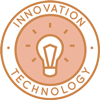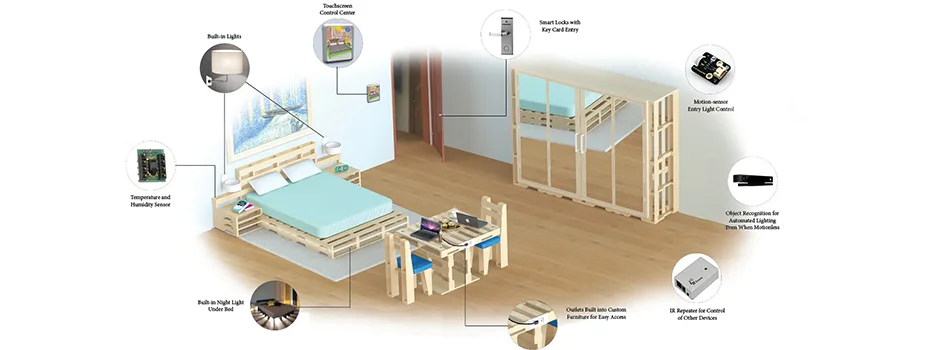
Off-grid-living Control, Measuring, and Automation Systems Exploration and Implementation
The purpose of environmental automation and measurement systems is to:
- Improve efficiency and save resources
- Assist with everyday tasks, making life easier and more enjoyable
- Keep an eye on critical systems, notify users of pending issues, and provide the objective data needed to make positive changes and decisions
All of these will help people move towards more sustainable, efficient, and comfortable lifestyles. Open sourcing these systems will increase and ease implementation by others, provide useful information, and forward sustainability and collaboration related to ecology and how it can be aided by technology. We will implement and open source the components of these systems as part of the 3-dome cluster crowdfunding campaign, Earthbag Village (Pod 1) and Duplicable City Center®, and then the other 6 villages.
This page contains the following sections related to off-grid-living automation and measurement systems:
- What are Environmental Automation Systems
- Why Automation Control System
- Control Systems Survey and Other Ways to Contribute
- Consultants to the Development of this Component
- Off-grid Control and Measurement Systems Details
- Privacy Policy
- Resources
- Summary
- FAQ
RELATED PAGES
CLICK THESE ICONS TO JOIN US THROUGH SOCIAL MEDIA
WHAT ARE
ENVIRONMENTAL AUTOMATION SYSTEMS
![]() Throughout this page, “Control systems” refers to controllable switches and sensors used in functions such as lighting and temperature control. “Automation” refers to the system’s ability to use feedback and software to automatically control lights, fans, heating, music, etc. “Measurement systems” refers to the systems capable of gathering and collating data on water, electricity, safety states, and internet bandwidth usage.
Throughout this page, “Control systems” refers to controllable switches and sensors used in functions such as lighting and temperature control. “Automation” refers to the system’s ability to use feedback and software to automatically control lights, fans, heating, music, etc. “Measurement systems” refers to the systems capable of gathering and collating data on water, electricity, safety states, and internet bandwidth usage.
While the technology to Control, Measure, and Automate buildings has been around for several decades, the application of that technology has only somewhat recently reached mainstream awareness, riding along with the trends of “smart buildings,” “smart homes,” and “green design.” Thus far, the primary applications have been in large (100k+ sq. ft.) commercial and industrial spaces as they have offered the greatest return on investment due to their size and the prior lack of incentive for the employees controlling these buildings to use electricity and water mindfully. However, as homes have gotten larger and owners more eco-conscious, the same principles have trickled down to residential consumers. This has also been encouraged by many city, state, and federal programs that incentivize resource conservation. Looking towards the future, we can see these advances as steps along the path towards the “Internet of Things” and “Smart Grid” ” a time when all devices are connected to the internet and therefore can communicate amongst themselves to autonomously perform their tasks in an energy efficient manner with more effective results as defined and monitored by their owners.

Duplicable City Center Control and Automation Overview ” Click to open a full-size PDF (1 MB) in a new window
Here’s an example of what this will look like for the Duplicable City Center. It is a diagram mapping sensor locations based on function, range, and capabilities. It allows us to start planning wiring and relationships between monitoring and control:
WHY AUTOMATION CONTROL SYSTEMS
![]() We see the goal with automation systems as making them easy enough, affordable enough, and demonstrating them as attractive enough to create a new market of interest and implementation. We will additionally use them to coordinate data, development, and improvements with collaborative self-sufficient and self-propagating teacher/demonstration communities, villages, and cities we’ll be helping build around the world. We will install these systems and fine-tune them in each of the village models, the Duplicable City Center, and beyond and evolve this page with additional implementation details, research, and systems development, installation, and maintenance specifics.
We see the goal with automation systems as making them easy enough, affordable enough, and demonstrating them as attractive enough to create a new market of interest and implementation. We will additionally use them to coordinate data, development, and improvements with collaborative self-sufficient and self-propagating teacher/demonstration communities, villages, and cities we’ll be helping build around the world. We will install these systems and fine-tune them in each of the village models, the Duplicable City Center, and beyond and evolve this page with additional implementation details, research, and systems development, installation, and maintenance specifics.
The primary benefit typically attributed to a building automation system (BAS) is a reduction in operating costs. Since this is achieved by saving resources (electricity, water, natural gas, etc.), it appeals to both the financially prudent and the environmentally conscious. Estimates of utility savings typically range up to 30%. However, often the baseline building used for comparison has round-the-clock operation of lights, HVAC, etc., due to a lack of scheduling or manual turn off; since that is almost a worst-case scenario, the advertised results are at least a bit overly optimistic.
A second common benefit of a BAS is a more comfortable indoor climate that does not require manual operation. Lighting, heating, cooling, and ventilation are often the aspects automated by responding to changes in sensed ambient temperature, light, humidity, motion, or time of day. “Green Buildings” are often designed to be very tightly insulated, which is great for saving energy by reducing the amount of heating and cooling needed, but can result in stale or stuffy areas. For this reason, ventilation systems are often more important for these buildings than for standard, less insulated construction. As a result of more comfortable environments, companies have found that employees appear more productive in automated buildings, reporting fewer complaints and taking fewer sick days.
Finally, each decision or process that needs to be made and can be automated is one fewer item for you (or some other human) to worry about. Whether deciding when to turn on or off lights, or adjusting the temperature or ventilation fans, or configuring the audio/visual system to the correct settings for a presentation, a computer programmed once to handle these situations can almost permanently take remembering all these little details off everyone’s plate, thereby making the outcomes easier, more consistent, and more optimal (whether that means resource efficient or comfortable to occupants or a mix of each is up to the group).
BENEFITS OF RESOURCE & BUILDING MONITORING
In most situations, monitoring is merely providing the sensor data that is the required input to the building’s automation processes. For example, monitoring room temperature is necessary for a thermostat to know when to turn the heating and cooling systems on or off. Automated lights may benefit from detecting motion or ambient light. The benefits attributed to these automated processes therefore rely upon accurate and frequent monitoring observations.
An emerging benefit of detailed monitoring is the ability to “mine” this “big data” in order to gain insights that allow the current and future systems to be fine-tuned to the specific needs they serve. By fine-tuning, a system can provide superior user outcomes while also requiring fewer resources. The gained efficiencies reduce utility costs and environmental impact.
Finally, information has become a benefit in itself for environmentally-conscious people. As the saying goes “what gets measured gets done” – an increasing interest in goals such as shrinking environmental footprint or reducing CO2 emissions has placed an increased importance on gathering relevant data. The more data we are able to gather, the more we can evaluate the resource and monetary benefits of making changes. The more we can open source share these details, the more we hope to help others to better evaluate the benefits of such systems and changes too.
INDIVIDUAL USAGE AND COMPARISON OPTIONS
 All visitors and residents of One Community will also have the option and ability to specifically monitor and compare their usage patterns to the averages of others. Data gathering and comparisons will be made possible through the systems and hardware described on this page and combined with unique QR codes (like the one here), card readers for their room keys, and private pin numbers for accessing the related and anonymous data. Through a system like this, all a person interested in detailed data on their usage will need to do is swipe their card or scan the QR code at the area they are about to use or enter. This will then associate their resource usage data with their private pin number and give them the ability to run a personal report at the end of their stay and compare their usage with that of other countries, national averages, visitor averages at One Community, and resident averages at One Community.
All visitors and residents of One Community will also have the option and ability to specifically monitor and compare their usage patterns to the averages of others. Data gathering and comparisons will be made possible through the systems and hardware described on this page and combined with unique QR codes (like the one here), card readers for their room keys, and private pin numbers for accessing the related and anonymous data. Through a system like this, all a person interested in detailed data on their usage will need to do is swipe their card or scan the QR code at the area they are about to use or enter. This will then associate their resource usage data with their private pin number and give them the ability to run a personal report at the end of their stay and compare their usage with that of other countries, national averages, visitor averages at One Community, and resident averages at One Community.
A report will then be available for download or emailing that shows more specifics related to their data. These specifics will include the comparisons already mentioned, resource-saving tips and tricks, and other related information. Our hope, after using a system like this, is that people will better understand their patterns and how their individual choices affect usage. With that understanding some visitors may also choose to change their patterns once they return home. We may also choose to offer residents and/or visitors optional competitions and incentives for demonstrating exceptional conservation.
CLICK HERE TO READ OUR PRIVACY POLICY
WAYS TO CONTRIBUTE TO EVOLVING THIS SUSTAINABILITY COMPONENT WITH US
The easiest way anyone can contribute to this page is to share your opinion with us through the following survey we created. It is 14 multiple choice questions with two options to write in your own ideas or comments at the end. Once you complete the survey, you will be given the option to see the results of all those who have completed it before you.

Click this Image to Help Us by Sharing Your Opinions About Open Source Automation, Control, and Measuring Systems
SUGGESTIONS | CONSULTING | MEMBERSHIP | OTHER OPTIONS
CONSULTANTS ON THE CONTROL AND AUTOMATION SYSTEMS DESIGN
Bupesh Seethala: Architectural Drafter & Designer, BS Electrical Engineering
Lucas Tsutsui da Silva: 4th-year Computer Engineering Student
Mike Hogan: Automation Systems Developer and Business Systems Consultant
Ramya Vudi: Electrical Engineer
Shubham Agrawal: Electrical Engineer
Tyler Gonnsen: Software Architecture Consultant and Web Application Developer
OFF-GRID CONTROL & MONITORING
SYSTEMS IMPLEMENTATION DETAILS
 When designing a system, a common approach is to consider it from the perspectives of the system’s inputs, processing, and outputs. At a high level, our proposed system will “see the world” by utilizing many input sensors which provide real time information for Lifestyle Applications. These lifestyle applications may run on one or more micro controllers and or servers and will process inputs with its custom and configurable logic rules in order to transform the data to be ready for analysis and to trigger changes in the output device controllers. The output device controllers will serve as intermediaries between the virtual software system and the real physical infrastructure. For example, LAN and/or WiFi integrated relays and valves can translate computer instructions into turning power circuits on/off or opening/closing water pipes. With this approach, we will be able to more easily adjust our system(s) over time to include new sensors, new logic functionality, and new automated devices.
When designing a system, a common approach is to consider it from the perspectives of the system’s inputs, processing, and outputs. At a high level, our proposed system will “see the world” by utilizing many input sensors which provide real time information for Lifestyle Applications. These lifestyle applications may run on one or more micro controllers and or servers and will process inputs with its custom and configurable logic rules in order to transform the data to be ready for analysis and to trigger changes in the output device controllers. The output device controllers will serve as intermediaries between the virtual software system and the real physical infrastructure. For example, LAN and/or WiFi integrated relays and valves can translate computer instructions into turning power circuits on/off or opening/closing water pipes. With this approach, we will be able to more easily adjust our system(s) over time to include new sensors, new logic functionality, and new automated devices.

Control and Monitoring Systems Overview
What follows is a detailed exploration of the Standards used to design the system, the Inputs, the Processors, and the Outputs.
CONTROL SYSTEMS DESIGN STANDARDS
Scalability, Sustainability, and Effectiveness were the top priorities One Community chose when designing this system.
SCALABILITY
The average 3-bedroom house requires over 300 control points to manage all AC outlets, ceiling lights, sensors, audio visual systems, motor controllers and valves. Large multi-level dwellings often require over 1000 control points. All components in the One Community design have been chosen so they can be used in single/multi-dwellings, greenhouses, tank farm/irrigation systems, energy management systems, and/or scaled up for use in systems even bigger than those of the Duplicable City Center and Earthbag Village.
SUSTAINABILITY
One of many challenges in developing effective central control systems relate to integration of multiple communication standards. This can present a costly and wasteful challenge when designing small and highly functional systems or large-scale automation. To address this issue, the core framework has been designed to translate signals and protocols from different device types into a central control system. This allows the use of automation products from different manufactures while maintaining integration with core lifestyle logic. This saves both money and resources.
EFFECTIVENESS
Home Automation must do just that… automate. Otherwise it’s yet another gadget that needs attention.
~ Michael T. Hogan
Imagine the ability to control every light, the temperature zones, music, etc. in your house from any location using any type of interface. This may include conveniently placed switches, touch screens, IR repeaters, speech recognition, and Xbox sensors. A command from any one of these interfaces can engage control macros to active or adjust individual zones or the whole house at the touch of a button, voice command, or reaction to some other event.
Now imagine adding integration with handheld devices, ambient light sensors, motion detection, IR commands, and other sensors. This sensory information combined with event calendars and logic modules provides a truly integrated and intelligent system. The concept of needing to use a light switch, manual thermostat control, etc. eventually diminishes.
Here are just a few application examples:
- Walk into a dark room, lights comes on. When room is empty, lights go out
- Multiple switches and control points provide a convenient means of activating macros and group functions such as zone dimming and all-device deactivation
- Event calendars determine when to shift into holiday or seasonal lighting modes
- Multi-room voice recognition handles alternate means of controlling lights and other devices from all family members simultaneously
All of this requires an integrated system of inputs, processing components, and output components. To put this in perspective, here is an example of what a comprehensive control and automation system might look like when integrating a diversity of different components and functions:

Control and Automation System Overview/Example
Putting this all together creates a system that makes life easier and more convenient while also saving money and resources.
INPUTS
 “Inputs” are the data gathering devices for the control and automation systems. We’ve added detailed descriptions and included product recommendations wherever we’ve identified what we feel is a product that best meets the needs of a specific area of input.
“Inputs” are the data gathering devices for the control and automation systems. We’ve added detailed descriptions and included product recommendations wherever we’ve identified what we feel is a product that best meets the needs of a specific area of input.
ELECTRICITY METERING
Electricity metering serves several purposes. Here are the three we consider most helpful:
- Evaluate electricity consumption based on area, function, individual and overall use
- Correlating unexpected electricity demands with device usage to quickly identify systems that may be running inefficiently. An example of this would be changing a water heater’s min/max temperatures
- Sending an alert when recognizing a failing pump that is drawing excessive current
HOW IT WORKS:
Current transformers (CT’s) are clamped around AC cables at the breaker panel(s). The CT transforms AC current to a smaller DC voltage levels supplied to separate channels on a CT gateway. The CT gateway in turn provides electricity usage data from each CT to the automation system infrastructure logic.
Here’s a hardware example electricity metering:
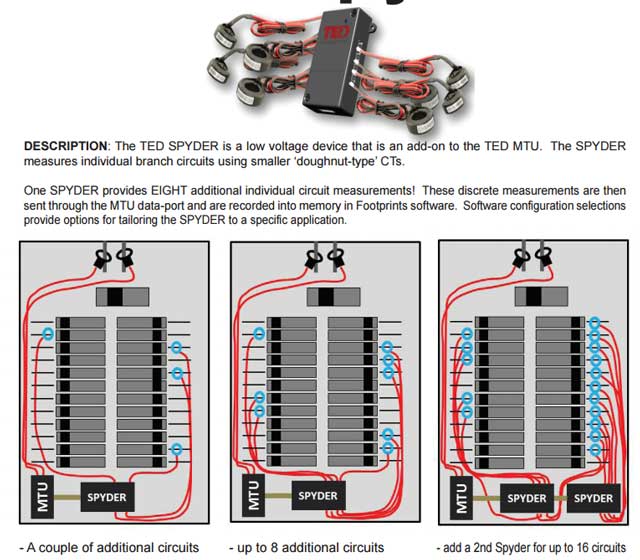
In order to understand the current state and flow of electricity on the property and allocate usage to the responsible users for accurate data gathering and open source sharing, we will need to monitor each building’s total consumption as well as individual circuits (or paths within a circuit) within the building. The suggested system(s) were selected based on flexibility/expandability and direct availability to consumers, making them good choices for budget-conscious DIYers.
Electronic monitoring systems are available for both commercial and residential applications. The two systems we are currently most excited about are provided here:
| Image | Product | Cost | Comments |
 | ECM-1240 Energy Monitor by Brultech | $200 | Suggestion for larger installations:
|
 | TED 5000 Energy Detective | $350 | Suggestion for smaller installations:
|
WATER METERING
Water metering serves several purposes:
- Evaluate water usage by function, area, and individual
- Evaluate and control flow diversion from various water sources
- Detect leaks and or failing water distribution systems before disaster strikes
In order to understand the flow of water on the property and allocate usage to the responsible users for accurate accounting, we will need to evaluate each building’s total consumption as well as the pipes serving individual rooms within the building.
HOW IT WORKS:
Water flow meters are inline sensors that count number turns of a paddle positioned inside a pipe. Based on pipe diameter, each turn of the paddle represents a specific volume of water. A system’s maximum flow rate is used when choosing sensors and calibration of settings in the software which translate number of turns over time to determine flow rate.
Several flow sensors have been evaluated for various requirements from low-flow to high-flow systems. Here are the two we are currently most excited about:
| Image | Product | Cost | Range | Comments |
 | Futurlec Flow Sensor FLOW40LO-REED | $11 | 0-80c |
|
 | Futurlec Flow Sensor FLOW100LO | $28 | 0-80c |
|
WATER TEMPERATURE
Water temperature monitoring serves several purposes:
- Metering and control of water heating system boilers and associated equipment
- Recording and adjusting heating system efficiencies for heat losses/gains
- Assisting with fine tuning zone heating controls
- Correlating energy used to provide hot water
Many aspects of our infrastructure depend on hot water infrastructure. Included in this are radiant floor heating, showers, kitchen sinks, and appliances. In order to understand the effectiveness of heating the water and visualize its usage on the property, it will be beneficial to monitor the water temperature at several points within the hydronic system. As an alternative to measuring the temperature at each location of water usage, we may be able to simply measure the temperature of the building’s hot and cold water sources and allocate usage by observing the quantity of each used at a certain location. For example, instead of monitoring total flow and temperature at a shower, we could instead measure flow for each of the hot and cold pipes, as well as the building’s hot and cold water storage temperatures.
HOW IT WORKS:
Temperature sensors are designed for specific purposes so as to provide best accuracy. This is accomplished when the sensors range closely matches environment being monitored. For example, measuring domestic hot water temperature uses a sensor with a range of 0 – 200 degrees Celsius. When measuring a boiler or steam system the sensors max range needs to be at least 800 C.
Several water temperature sensors have been evaluated for various requirements. Here are the three we are currently most excited about:
| Image | Product | Cost | Range | Comments |
 | Pipe Temp sensor | $50 | -40c to 125c |
|
 | Phidget Thermal probe | $30 | -50c to 800c |
|
 | Monnit Wi-Fi Water Temperature Sensor | $170 | -40 to 100+c |
|
AMBIENT LIGHT
Ambient light detection is used by lifestyle logic to determine several conditions including:
- Lux Level of ambient light passing through shade mediums. This is used to evaluate various types of screens, shades and masks
- Informing system logic of natural and artificial light levels so as to adjust lighting accordingly
Knowing when a space is being well lit by the natural lighting (such as sunlight through the windows or skylights) allows lifestyle logic to adjust light levels to a predefined setting. Imagine sitting by a window reading a book. As the natural light from the window fades, the system will incrementally raise artificial lighting to a user-customizable level. In contrast, as natural light increases, based on thresholds, artificial lighting will incrementally decrease, resulting in a subtle transition to natural light. Ambient light sensors in conjunction with motion sensors provide automatic modes of operation for detecting occupied versus away behaviors that save resources and create a more comfortable living environment.
HOW IT WORKS:
Ambient light detectors come in several varieties. The main two categories are:
- Presence or lack of light sensors: These traditionally consist of cadmium sulfide (CDS) cells or photodiodes to provide an On/Off output
- Amount of visible light (Lumens) per square meter (Lux) sensors: These consist of a calibrated sensor that outputs a linear analog voltage representing amount of lumens detected by the sensor. Sensors used outdoors should have a 70k Lux max in order to match the amount of lumens from a bright sunny day. Indoor sensors in order to detect smaller light changes should have a 1000 Lux max.
The following table lists the specifications and features for several light sensor recommendations.
| Image | Product | Cost | Range | Protocol | Comments |
 | Phidgets 1127_0 | $7 | 3 to 70000 lux | 0-10mv analog |
|
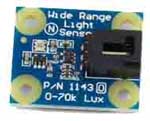 | Phidgets 1142_0 | $7 | 1 to 1000 lux | 0-10mv analog |
|
 | PT550 | $4.50 | 1 to 6000 Lux | Analog |
|
COMPUTER NETWORK TRAFFIC
Computer network traffic monitoring serves several purposes:
- Detecting and rectifying network bottlenecks
- Identifying noisy systems affecting network performance
- Measuring effects of high bandwidth applications and increasing system capacity where needed
- Providing data usage statistics
 In order to maintain a high level of network reliability. We will configure our property data network (intelligent switches and routers) to monitor the quantity of data being requested per MAC address (which is unique per device). Residents will register their devices with our system, which will then allow the device to access the data network and correctly allocate all of the bandwidth that the device consumes to the appropriate resident. Guests will be required to log into our separate “Guest WiFi” system, which will automatically track the bandwidth used and associate it with that guest’s secure ID. As per privacy policy, visitor user names will not be directly tied to data usage. All registered MAC addresses will be associated with a numerical ID that can only be related back to a user name by the user’s PIN.
In order to maintain a high level of network reliability. We will configure our property data network (intelligent switches and routers) to monitor the quantity of data being requested per MAC address (which is unique per device). Residents will register their devices with our system, which will then allow the device to access the data network and correctly allocate all of the bandwidth that the device consumes to the appropriate resident. Guests will be required to log into our separate “Guest WiFi” system, which will automatically track the bandwidth used and associate it with that guest’s secure ID. As per privacy policy, visitor user names will not be directly tied to data usage. All registered MAC addresses will be associated with a numerical ID that can only be related back to a user name by the user’s PIN.
HOW IT WORKS:
For small computer networks servicing isolated dwellings, a simple flat network and several access points will likely suffice. Based on size and complexity of the Duplicable City Center and outlying areas, the computer network will consist of several virtual LANS (VLANS) on a high-speed backbone providing connections to wired and wireless computing devices. VLANS will be configured to provide isolation between building infrastructure devices, security, administration, occupant and guest access. The data monitoring system will be set up to monitor network traffic on VLANS as well as individual network connections.
MOTION DETECTION
Motion detection serves several purposes:
- Informs automation system of human or animal presence
- Automatic control of lighting
- Automatic heating system setbacks when no one is present
- Automation of security and safety systems
Motion sensing represents the system’s awareness of human or animal presence in specified areas. Passive infrared sensors (PIR) are commonly used for this type of sensing. The output is binary in nature with either motion or no-motion status. Resulting sensor data will be used by system lifestyle logic to manipulate various conditions for heating, cooling, lighting and safety.
HOW IT WORKS:
These devices work by detecting changes in infrared radiation (similar to heat energy) that humans give off and thereby can detect when people are moving within a space. Based on whether or not a room is occupied, they automatically turn lights on and off and maximize energy savings. Since they are “passive,” the devices themselves do not emit any energy or radiation to perform this function.
When placing motion sensor for living areas, at least one sensor is pointed towards the entrance door (from the inside) with an orientation that senses when someone has first crossed the doorways threshold, while not sensing motion from people walking by the door from the outside. An additional sensor is then placed facing the living area of each space to provide motion status for resetting light countdown timers. In this example each 12 by 12 room will require at least 2 sensors.
The following table lists the specifications and features for several motion sensor recommendations:
| Image | Product | Cost | Range | Protocol | Comments |
 | Phillips PIR wide | $20 | 6.6ft | Digital Output |
|
 | Phillips PIR narrow | $20 | 16ft | Digital Output |
|
 | PIR Motion Sensor v1.0 | $4.90 | 22ft | Digital Output |
|
INDOOR CLIMATE
(TEMPERATURE & HUMIDITY)
Temperature / humidity detection serves several purposes:
- Precision monitoring of environmental conditions
- Integration of heating systems with automation systems (vents, heat valves, fans)
- Observing combined effects of heat, moisture and airflow
- Logging readings to correlate with infrastructure system settings to achieve desired effects
- Environmental control of greenhouses
HOW IT WORKS:
Temperature and humidity sensors are a relatively inexpensive set of devices capable of precisely measuring temperature to within 1°F and relative humidity to within 1%. Location of temperature sensors greatly affects system ability to respond quickly and accurately to subtle environmental changes. For these to be as effective as possible, the following points should be considered:
- Locate sensors at least 1 meter above floor level for a living room or bedroom. Over 1 meter for a utility room
- Air temperature spreads out eventually causing everything nearby to eventually be at the same temp as the air and humidity will affect the rate at which things heat or cool
- The greatest temp difference during the shortest period of time is temp near the floor vs temp near the ceiling. If you want to measure conditions such as time to heat up, efficiencies, effect of air flows and humidity etc., placing sensors at multiple levels is required
- If you just want average temp of space, a single sensor works fine
- If separate, humidity sensors should follow the same location model as temperature sensors
Temperature and humidity sensors come with a variety of ranges and protocols. Evaluating the diversity of what is available, and our intended uses, here are the three we are currently most excited about:
| Image | Product | Cost | Range | Protocol | Comments |
 | Phidgets Temp/Humidity | $50 | -30 to 80c 10%RH to 95%RH | 0-10mv analog |
|
 | Parallax Temp/Humidity | $42 | -40c-123c | 2 wire digital |
|
 | HTU21D-F Temp/Humidity | $15 | -40 to 120°C 0 to 100 %RH | Digital / I2C, or PWM / analog, or SDM, convertible to analog |
|
TIME AND SCHEDULES
![]() The current time and programmed schedules will serve as inputs into our system because we may desire certain features to be turned on or off according to a predetermined schedule or configured logic rules that vary according the time of day or day of year.
The current time and programmed schedules will serve as inputs into our system because we may desire certain features to be turned on or off according to a predetermined schedule or configured logic rules that vary according the time of day or day of year.
USER CHECK-IN/OUT
 Understanding where certain people are (or plan to be in the future) can be of benefit for controlling resources or allocating usage to users as part of data analysis. Users may “check in” or “check out” at certain locations to indicate their participation in an activity or their presence in a room. This can (and likely will) be accomplished in several ways. First, a user can directly check in/out via a website or mobile application. Second, a user can indicate his or her intended schedule in an online calendar. Third, a device reader at the location may allow the user to quickly check in/out, such as by swiping a keycard, scanning a barcode, or holding a cell phone within a certain range.
Understanding where certain people are (or plan to be in the future) can be of benefit for controlling resources or allocating usage to users as part of data analysis. Users may “check in” or “check out” at certain locations to indicate their participation in an activity or their presence in a room. This can (and likely will) be accomplished in several ways. First, a user can directly check in/out via a website or mobile application. Second, a user can indicate his or her intended schedule in an online calendar. Third, a device reader at the location may allow the user to quickly check in/out, such as by swiping a keycard, scanning a barcode, or holding a cell phone within a certain range.
These data metrics will be helpful to One Community’s global change methodology and open source goals by helping track and share results and participation in both the community contribution model and the optional fulfilled living and other available Highest Good society aspects of One Community. Our goal in doing this is to objectively demonstrate the increased recreational value (in dollars not needing to be spent) and time availability (in time saved) within a replicable teacher/demonstration hub like One Community.
USER DIRECT ONLINE ACTION
![]()
One Community will build functionality into the Highest Good Network which will allow users to see the devices and options that they are currently allowed to control. They can then directly indicate their preferences through the website or mobile application.
PROCESSING
 “Processing” components of the control and automation systems are the components that help to use input data to save resources and/or share availability of resources, efficiency metrics, and other relevant information for fine-tuning and improving total system effectiveness and efficiency. This section describes how each of the individual processing components of the control and automation system contribute to it.
“Processing” components of the control and automation systems are the components that help to use input data to save resources and/or share availability of resources, efficiency metrics, and other relevant information for fine-tuning and improving total system effectiveness and efficiency. This section describes how each of the individual processing components of the control and automation system contribute to it.
LOGIC CONTROL AND INTERFACE
 Logic Control and Interface works similar to the way the human nervous system performs its tasks. In the human brain, neurons are like passive sensors that tell the brain what’s going on. The low-level parts of the brain are like an autonomous Micro Controller (MC). Low-level functions happen without the upper brain giving any instruction but the upper brain is still aware of information coming from the low-level brain (MC). Included in this is the ability to override other systems in response to additional needs. Meanwhile, the upper brain Control Center handles purposeful action, higher level evaluation, and decision making.
Logic Control and Interface works similar to the way the human nervous system performs its tasks. In the human brain, neurons are like passive sensors that tell the brain what’s going on. The low-level parts of the brain are like an autonomous Micro Controller (MC). Low-level functions happen without the upper brain giving any instruction but the upper brain is still aware of information coming from the low-level brain (MC). Included in this is the ability to override other systems in response to additional needs. Meanwhile, the upper brain Control Center handles purposeful action, higher level evaluation, and decision making.
HOW IT WORKS:
One Community will use a system framework where most of the decisions are made by logic running on a main server while autonomous operations are handled by micro-controllers (MC’s). The server logic has access to all data and the ability to monitor and override functions from MC’s. This methodology encourages simplicity, redundancy, and the ability to build in failsafe functions.
Here are the micro-controller options we are currently most excited about:
| Image | Product Name/Model | Cost | OS | Interface | Description |
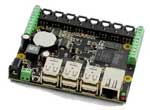 | Phidgets 1073_ SBC | $150 | Debian Linux | Ethernet |
|
 | Phidgets 1012_2 | $100 | na | USB |
|
 | WEB TEMP | $599 | Proprietary | Ethernet |
|
 | Raspberry Pi 2 B | $50 | Linux Windows 10 | Ethernet/Wi fi |
|
 | Arduino Leonardo | $30 | Linux | USB Wifi add on |
|
 | Arduino Mega 2560 | $45.95 | Linux | USB |
|
LIGHTING

Certain features (for example lighting or room electricity) may turn on in response to detected motion or turn off as a result of a period of no detected motion. It is estimated that roughly 15% of the total energy consumed by US residences goes to lighting. However, much of this is likely wasted due to lights being turned on during times when no one is present in the area or when the ambient sunlight is more than sufficient. Due to our high energy costs, every Watt saved is very important to us.
LIGHT DIMMERS
Lights on dimmers are controlled separately from standard on/off lighting controls. The AC wire to the light is the same, except it’s connected to a dimmer pack output as opposed to a relay contact output at the panel. Attached is a detailed technical article about dimming from the lighting experts Lutron. It is a wealth of great info and a must read to understand the complexities around dimming: Lutron Dimmer white paper
| Image | Model | Cost | Wattage | Control Method | Comments |
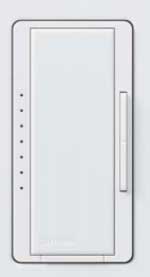 | Lutron Dimmer | $30-50 | 600 watts | Hard wired to relay contacts |
|
 | Ethernet light dimmer | $390-$500 | 100-1500 watts per channel | Ethernet RS232 |
|
HEATING
 A core feature of our automation system is the ability to automatically maintain certain areas within certain temperature ranges. In order for the system to know when to turn on or off, it will need to be able to sense the current temperature. By far the largest component of building energy usage is maintaining a comfortable indoor climate, typically via a Heating, Ventilation, and Air Conditioning (HVAC) system. Due to our location and construction methods, One Community intends to be 100% passively cooled, thereby removing the need for an air conditioning system.
A core feature of our automation system is the ability to automatically maintain certain areas within certain temperature ranges. In order for the system to know when to turn on or off, it will need to be able to sense the current temperature. By far the largest component of building energy usage is maintaining a comfortable indoor climate, typically via a Heating, Ventilation, and Air Conditioning (HVAC) system. Due to our location and construction methods, One Community intends to be 100% passively cooled, thereby removing the need for an air conditioning system.
VENTILATION
 Primary ventilation is managed by core HVAC system. Augmentation to core ventilation can be controlled based on direct user actions and/or detected temperature differentials settings.
Primary ventilation is managed by core HVAC system. Augmentation to core ventilation can be controlled based on direct user actions and/or detected temperature differentials settings.
WATER AND ELECTRICITY AVAILABILITY
 Users may “check in” or “check out” at certain locations to indicate their participation in an activity or their presence in a room which may turn on or off room water or electricity and affect how the associated resources are allocated.
Users may “check in” or “check out” at certain locations to indicate their participation in an activity or their presence in a room which may turn on or off room water or electricity and affect how the associated resources are allocated.
INTERNET AVAILABILITY
 Critical internet traffic will be given the highest priority so that in a situation where we’ve met our aggregate bandwidth limit, the less important personal browsing will slow down to allow the necessary infrastructure services to continue unhindered. We may also “throttle” individual users (decrease speed in response to prior excessive usage) so that the bandwidth is shared fairly amongst all residents during periods of peak usage.
Critical internet traffic will be given the highest priority so that in a situation where we’ve met our aggregate bandwidth limit, the less important personal browsing will slow down to allow the necessary infrastructure services to continue unhindered. We may also “throttle” individual users (decrease speed in response to prior excessive usage) so that the bandwidth is shared fairly amongst all residents during periods of peak usage.
OUTPUTS
 “Outputs” are the components of the control and automation system that allow for remote control of devices, lighting, fans, actuators, pumps, valves etc. We also included Data Analysis in this section since it is most relevant to the control and monitoring of the output components. Adding output components to key access points will allow us to additionally program and/or automate the process of conservation based on the data we are gathering. We’ve added product recommendations wherever we’ve identified what we feel is a product that best meets the needs of a specific output category.
“Outputs” are the components of the control and automation system that allow for remote control of devices, lighting, fans, actuators, pumps, valves etc. We also included Data Analysis in this section since it is most relevant to the control and monitoring of the output components. Adding output components to key access points will allow us to additionally program and/or automate the process of conservation based on the data we are gathering. We’ve added product recommendations wherever we’ve identified what we feel is a product that best meets the needs of a specific output category.
AC CONTROL PANEL
 In order to meet safety and electrical code requirements all AC electrical connection points must be enclosed in a protective case or panel. The panel provides connection points (terminal blocks) for connecting lights, plugs fans etc. Relays and interface circuitry allow monitoring and control of AC devices. Connections to sensors and other input output device run to/from the panel as well.. In some cases a micro-controller may also be installed provide a complete self contained system.
In order to meet safety and electrical code requirements all AC electrical connection points must be enclosed in a protective case or panel. The panel provides connection points (terminal blocks) for connecting lights, plugs fans etc. Relays and interface circuitry allow monitoring and control of AC devices. Connections to sensors and other input output device run to/from the panel as well.. In some cases a micro-controller may also be installed provide a complete self contained system.
ELECTRICITY CIRCUIT RELAY
Relays serve several purposes including:
- Isolation of low voltage controls to high voltage devices
- Use of low voltage wire for control
- Primary switching device for lighting, appliances, pumps, motors, valves
- Allows integration of sensors and computer logic
HOW IT WORKS:

A relay works on the same basic principle as a light switch. While open, electricity doesn’t flow through the circuit. By expending a small amount of energy to close the circuit, however, the large amount of energy within the circuit begins to flow and power all of the connected devices. Whereas a light switch is powered by a human’s direct action of physically flipping the switch, a relay can be switched by a small amount of electricity that is provided by an automated computing device (i.e. via automated computer logic).
There are literally thousands of types of relays specifically designed for various needs. We have identified several relays and modules well suited for control and automation. Here they are:
| Image | Product | Cost | Current | Coil Voltage | Protocol | Comments |
| Eklan Memory Relay | $25-$35 | 15 amp | 12-240 AC or DC | Pulse |
| |
 | Phoenix 24vac Relay | $12-$27 | 16 amp | 24 VAC | Contact |
|
 | National Control Devices ProXR Relays | $200 | 10 amp | Internal | Sockets API |
|
AUDIO AND VISUAL SYSTEMS CONTROL
IR REPEATERS
IR repeaters serve several purposes including:
- Integration of multiple remote controls to audio visual equipment
- Allowing remote controls to operate equipment that’s out of line of sight (other room)
- Providing system state and control macros to automatically set equipment settings
- Integration with automation system(s) (turn off all systems, turn down volume when phone rings, voice activated equipment)
- Central database of IR Operation codes so programming one IR repeater allows replication of the database to easily program others
HOW IT WORKS
Infrared Repeaters (IR) typically have a range of 30 ft. for sending and receiving audio systems IR command signals. For best function, you should therefor place IR repeater within 30 ft facing AV equipment racks, billboard TVS, etc. For large areas, one transceiver facing the majority of AV equipment, plus another facing the audience or gathering areas, allows for complete automation of AV equipment and all IR remote activity from remotes and or smart phones.
Here are the IR repeaters we are currently most excited about:
| Image | Model | Cost | Protocol | Comments |
 | ir Trans IR Repeater | $15 | IR codes over ethernet |
|
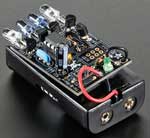 | HACKADAY TV-BE-GONE | $20 | Standalone |
|
ETHERNET SECURITY CARD READERS
Ethernet security card readers have a few key features and functions:
- Each reader has its own internal web server and build in user/card database
- The incorporate into standard multi-card reader management systems
- Function as door lock control relays
| Image | Model | Cost | Type | Comments |
 | HID Card reader | $350-500 | Security card reader and door lock controller |
|
WATER PIPE VALVE
Current Suggestion: Asco 212 Series Solenoid Valve
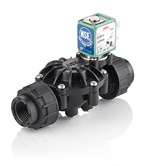 A valve is the water equivalent to an electrical relay ” a small amount of energy applied to the valve has the large effect of switching the valve’s open/close state. By placing valves appropriately within the water pipes and powering the valves with a LAN/WiFi connected device, we will be able to open and close the pipes to control water flow via automated computer logic.
A valve is the water equivalent to an electrical relay ” a small amount of energy applied to the valve has the large effect of switching the valve’s open/close state. By placing valves appropriately within the water pipes and powering the valves with a LAN/WiFi connected device, we will be able to open and close the pipes to control water flow via automated computer logic.
COMPUTER NETWORK TRAFFIC SHAPING
Current Suggestion: See One Community Internet Page
![]() Traffic shaping is a technique used in computer networks to allow for prioritizing bandwidth usage based on the user or device. This can be especially helpful in situations where internet bandwidth is limited and/or still being expanded to meet current needs. Through traffic shaping a group is able to make sure their highest priority network needs are always met first.
Traffic shaping is a technique used in computer networks to allow for prioritizing bandwidth usage based on the user or device. This can be especially helpful in situations where internet bandwidth is limited and/or still being expanded to meet current needs. Through traffic shaping a group is able to make sure their highest priority network needs are always met first.
DATA ANALYSIS
Once the system is in operation, we will work with the relevant decision makers to develop relevant reporting capabilities for the Highest Good Network so that the large amount of automation data can be consolidated, analyzed, and “mined.” The goal here will be to create replicable analysis systems that are built into our custom software so the people who choose to use them can share and open source the data to help each other and all future teacher/demonstration villages to be even more efficient and effective.
PROGRAMMING
One design element required to design such as system involves classifying sensors/devices into categories.
- Critical function sensor/device type – situations where the sensor/device MUST perform its function. It should run even if something goes wrong with the code. Examples include tank filling (water level/pump control), mobile heating devices such as curling irons. You don’t want the chance of a heater accidentally turning itself on due to a mistake in the code.
- Information/convenience/entertainment sensors – more high level functions, something where you can make a mistake with the code and it won’t be catastrophic
The emphasis must be on safety. You want to make sure that a sensor/device in the critical function category doesn’t have to talk to the main controller for a decision to be made.
PRIVACY POLICY
Sharing equal commitments to transparency, forwarding open source sustainability, and privacy, One Community is designing to adhere to a privacy policy and structure that will include the following specific privacy safeguards for all visitors:
- All data gathering processes will be transparent
- Usage-data gathered will be attached to numbers, not individual names
- Access by people to their personal usage will be via private PIN
- Visitors will have the option to completely power off living spaces and eliminate all usage and data gathering
For Community Residents/Members, personal usage data will be shared freely with each other. Details on why are in the FAQ.
RESOURCES
- Microsoft Free Training Courses for Control Systems Application Development
- Overview of the Wireless Tag system
- Home automation DIY tutorial using Ubiquiti products
- An inspiring DIY guide to creating an automated home thermostat using basic electronics available to hobbyists
- Siemens Download Center: Search for “Energy Efficiency In Building Automation” and you’ll find several helpful guides such as:
- Application guide for heating and cooling supply
- Application guide for ventilation and air conditioning
- Contact us if you have one to add….
Building your own board? Here are some great soldering tutorials that are specific to control board creation:
SUMMARY
![]() Control, automation, and data-gathering systems have the potential to dramatically increase efficiency and understanding of how people use resources. For groups interested in participating in this process, One Community is open source sharing the development of our system with additional plans to integrate options for data sharing into the Highest Good Network so teacher/demonstration hubs around the world can collaboratively compare and refine their approaches.
Control, automation, and data-gathering systems have the potential to dramatically increase efficiency and understanding of how people use resources. For groups interested in participating in this process, One Community is open source sharing the development of our system with additional plans to integrate options for data sharing into the Highest Good Network so teacher/demonstration hubs around the world can collaboratively compare and refine their approaches.
FREQUENTLY ANSWERED QUESTIONS
Q: Are you recommending this level of monitoring/automation/control for everyone?
No, our organization is focused on this level of detail because of our open source and sustainability goals. We’d like to work with others who are interested in this level of data gathering, sharing, and systems fine tuning too. That said, we aren’t making recommendations to others about whether or not they should adopt a similar approach. For people who want to though, we’re focused on making it as easy, collaborative, and useful as we can.
Q: How will you decide what will be monitored and what won’t?
We feel that data gathering is essential to maximizing our effectiveness and efficiency. With this in mind, our goal is to monitor as many resource elements as possible.
Q: Why not just hire professionals to install an industry solution?
We aren’t sure yet what level of professional involvement will occur in implementing our monitoring and automation system. This project is very important to us for sustainability reasons, but it isn’t mission-critical (as it would be in a hospital or science lab for example). Also, we recognize that hiring a team of professionals and paying a premium for industry products will be out of reach for many folks due to financial and logistical constraints, which is a concern for our goal of making this as easy to duplicate as possible. With the emergence of a technical-savvy do-it-yourself generation of open-source “prosumers,” we believe that the industry’s current model of selling a closed system through middlemen has real opportunity for improvement. If we can create an open source solution, we see this as helping a lot of people and stimulating the whole industry too by creating a new market of people interested in these technologies and willing to pay people to design systems and/or paying to upgrade or enhance the do-it-yourself versions we want to provide.
Q: Are you writing your own software or is there an existing open-source solution?
We will be writing our own open source software. We have also done a lot of research into potential systems so we can include this in our decisions of “buy vs. build” and “starting from scratch vs. adapting existing work.” From what we’ve researched, the following projects look the most in alignment with our goals:
- http://www.openmotics.com/
- http://www.openhab.org/
- http://www.openhomeautomation.net/
- http://www.opensourceautomation.com/
- http://www.domoticz.com/
- http://www.openremote.org/
- http://www.ninjablocks.com/
Q: In your Privacy Policy you say that Community Resident/Member personal-usage data be shared freely with other Community Residents/Members. Why is this different than visitor data privacy?
Being a One Community Community Resident or Member is about joining a sustainability think-tank and team purposed to do all we can to create positive and permanent global change within our lifetime. Our team is coming together with a shared set of values and a vision to live for The Highest Good of All. Part of being on a team with goals as large and specific as ours is data gathering and sharing so we can constantly work together to analyze this data, improve all systems, and share what we learn as open source tutorials, examples and templates for others. The more transparent we are with each other, the more efficient and beneficial all this will be for us and the world.
 One Community
One Community



